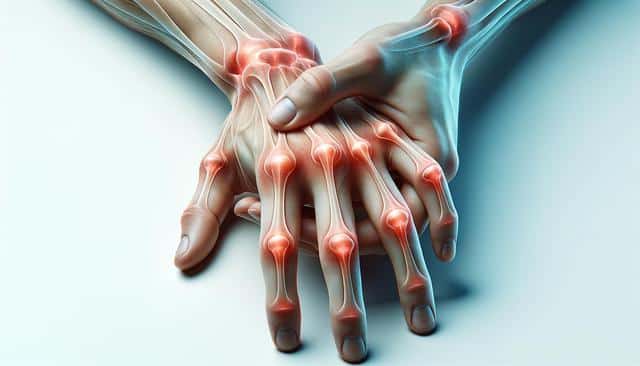
Battling Joint Pain: Symptoms to Watch For and the Most Effective Treatments
Understanding the Common Causes of Joint Pain
Joint pain is a widespread condition that can stem from various causes, ranging from temporary injuries to chronic health conditions. The joints are the connections between bones that allow for movement and flexibility, and when they become inflamed or damaged, the discomfort can be significant. Among the most frequent causes are arthritis, bursitis, tendonitis, and injuries such as sprains and fractures. Inflammatory conditions like rheumatoid arthritis and gout also contribute to joint discomfort, whereas osteoarthritis is often linked to aging and wear and tear on the joints.
Understanding the source of joint pain is crucial in determining the right treatment approach. A patient may notice pain in a single joint, like the knee or shoulder, or experience widespread discomfort throughout the body. Some key contributing factors include:
- Repetitive motion or overuse of a joint
- Autoimmune disorders
- Infections affecting the joints
- Previous injuries or surgeries
- Obesity, which puts extra pressure on weight-bearing joints
Proper diagnosis by a healthcare provider is essential, as it helps identify whether the joint pain is due to a temporary issue or an ongoing medical condition that requires long-term care.
Recognizing the Symptoms of Joint Pain
Joint pain symptoms can range from mild stiffness to severe inflammation and discomfort that limits movement. Early detection of these signs can help individuals seek treatment sooner and potentially avoid permanent joint damage. Common symptoms include aching, swelling, tenderness, and a decreased range of motion in the affected area.
In more advanced cases, individuals might also notice:
- Redness and warmth around the joint
- Creaking or grinding sensations during movement
- Visible deformities in the joint structure
- Persistent pain even during rest
If joint pain continues for several weeks or is accompanied by unexplained weight loss, fever, or fatigue, it may be indicative of an underlying health condition. Consulting a healthcare professional for imaging tests and blood work can help determine the root cause and guide next steps in treatment planning.
Exploring Non-Surgical Treatment Options
Many individuals experiencing joint pain can find relief through non-surgical treatments, especially in the early stages. These methods aim to reduce inflammation, restore mobility, and improve overall joint function without invasive procedures. Some of the highly regarded approaches include physical therapy, lifestyle modifications, and the use of oral or topical medications.
Common non-surgical treatments include:
- Over-the-counter anti-inflammatory medications
- Cold and heat therapy to reduce swelling and stiffness
- Joint-friendly exercises such as swimming or yoga
- Weight management programs to reduce stress on joints
- Assistive devices like braces or orthotic supports
In addition to these treatments, some individuals pursue alternative therapies such as acupuncture or massage therapy. While results can vary, these methods may provide additional comfort when used alongside conventional care. It’s essential to consult with a medical provider before beginning any new therapy to ensure it aligns with the individual’s overall treatment plan.
When to Consider Medical Interventions
For some people, joint pain may persist or worsen despite trying conservative treatment methods. In these cases, exploring medical interventions may be necessary. Depending on the cause and severity of the issue, doctors may recommend prescription medications, injections, or, in more serious cases, surgical options.
Some medical interventions that may be advised include:
- Corticosteroid injections to reduce inflammation
- Hyaluronic acid injections for added joint lubrication
- Biologic drugs for autoimmune-related joint issues
- Arthroscopic surgery for removing damaged tissue
- Joint replacement surgery in severe cases
It’s important to note that while surgery can offer relief for some, it is usually considered after other treatments have not been successful. Recovery times and outcomes can vary, so discussing the risks and benefits with a healthcare provider is key to making an informed decision.
Long-Term Strategies for Joint Health
Maintaining joint health over the long term is essential for reducing pain and preventing further deterioration. Adopting daily habits that support joint function can make a significant difference, especially for individuals managing chronic conditions like arthritis or recovering from joint injuries.
Helpful strategies for long-term joint care include:
- Incorporating stretching and strengthening exercises into a regular routine
- Staying hydrated to keep joints lubricated
- Wearing supportive footwear that reduces pressure on joints
- Practicing good posture to avoid unnecessary strain
- Limiting high-impact activities that may cause joint damage
In addition, regular checkups with a healthcare provider can help monitor joint health, especially if symptoms change or new areas of discomfort arise. Preventive care, such as early intervention and consistent monitoring, plays a vital role in managing joint pain effectively and maintaining mobility for years to come.
Conclusion: Taking Control of Joint Pain
Joint pain can be a complex and challenging issue, but with the right information and a proactive approach, it’s possible to manage symptoms and improve quality of life. Recognizing early warning signs, exploring non-invasive treatments, and seeking medical advice when necessary are all key steps toward achieving lasting joint health. Whether the pain is due to aging, injury, or an underlying condition, effective management often involves a combination of treatments tailored to the individual’s needs. By staying informed and working closely with healthcare professionals, individuals can take meaningful steps toward reducing discomfort and maintaining an active lifestyle.


